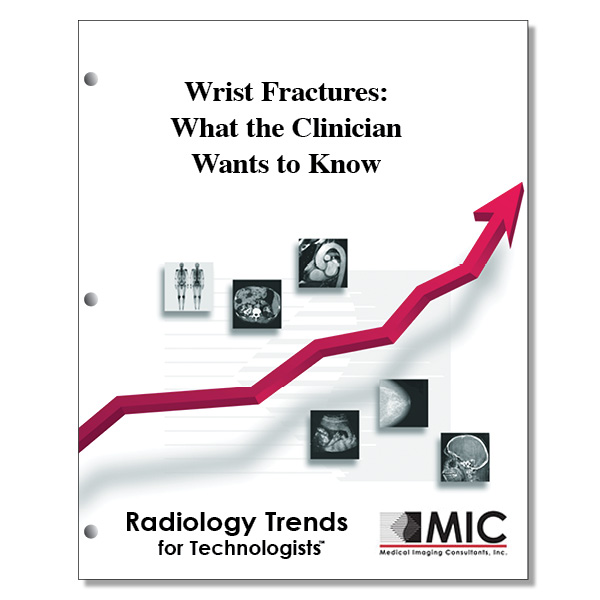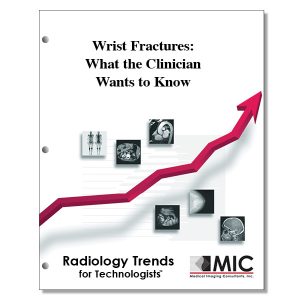

Wrist Fractures: What the Clinician Wants to Know
A presentation of wrist anatomy and various fractures along with the imaging methods used to best demonstrate them.
Course ID: Q00079 Category: Radiology Trends for Technologists Modalities: CT, MRI, Nuclear Medicine, Radiography3.5 |
Satisfaction Guarantee |
$37.00
- Targeted CE
- Outline & Objectives
- Objectives
Targeted CE per ARRT’s Discipline, Category, and Subcategory classification for enrollments starting after June 11, 2024:
[Note: Discipline-specific Targeted CE credits may be less than the total Category A credits approved for this course.]
Computed Tomography: 1.75
Procedures: 1.75
Head, Spine, and Musculoskeletal: 1.75
Magnetic Resonance Imaging: 1.75
Procedures: 1.75
Musculoskeletal: 1.75
Nuclear Medicine Technology: 1.75
Procedures: 1.75
Other Imaging Procedures: 1.75
Radiography: 1.75
Procedures: 1.75
Extremity Procedures: 1.75
Registered Radiologist Assistant: 3.50
Procedures: 3.50
Musculoskeletal and Endocrine Sections: 3.50
Outline
- Anatomy
- Distal Radius Fractures
- Anatomy
- Imaging Assessment
- Classification
- Treatment
- Distal Radius Malunion
- Carpal Fractures
- Scaphoid Fractures
- Lunate Fractures
- Triquetrum Fractures
- Trapezium Fractures
- Pisiform Fractures
- Hamate Fractures
- Capitate Fractures
- Trapezoid Fractures
- Conclusion
Objectives
Upon completion of this course, students will:
- be able to identify the capitate
- be able to identify the ulna
- be able to identify the trapezium
- be able to identify the radius
- be able to identify the scaphoid
- be able to identify the lunate
- be able to identify the radius
- know which bones the distal radius articulates with
- understand what percentage of fractures seen acutely in the emergency department those of the distal radius account for
- be familiar with the three concave surfaces on the distal radius
- know which is the only view that demonstrates the trapeziotrapezoidal joint
- understand the clinical applications of CT of the distal radius, ulna and carpus
- understand the applications of coronal CT to the wrist
- understand the applications of MR imaging to the wrist
- know the definition of Radial Length
- know the definition of Radial Inclination
- know the definition of Volar Tilt of the Distal Radius
- understand the characteristics of a Barton fracture
- understand the characteristics of a Hutchinson fracture
- be familiar with the Melone classification
- be familiar with the other systems for the classification of distal radius fractures
- know when a patient should be seen for repeat radiography following an anatomic reduction of a distal radius fracture
- understand the treatment options for the 4 types of fractures
- understand the incidence of distal radius fracture healing in a nonanatomic position
- know the degree of detail CT can provide
- be familiar with the distribution of forces normally borne through the distal radius and ulna
- know the factors which contribute to the development of posttraumatic osteoarthritis of the wrist
- name the second most common wrist fracture
- understand the relationship between fractures and osteoarthritis
- understand the distribution of fractures of the scaphoid
- know the proper position for obtaining CT sections through the long sagittal axis of the scaphoid
- list the geometric factors considered an abnormal combination when evaluating scaphoid fractures
- understand the clinical characteristics of lunate fractures
- know the definition of Kienböck disease
- understand the clinical characteristics of triquetrum fractures
- understand the clinical characteristics of trapezium fractures
- understand the clinical characteristics of pisiform fractures
- understand the clinical characteristics of hamate fractures
- understand the clinical characteristics of capitate fractures
- know the indications for CT or MR imaging of the trapezoid
